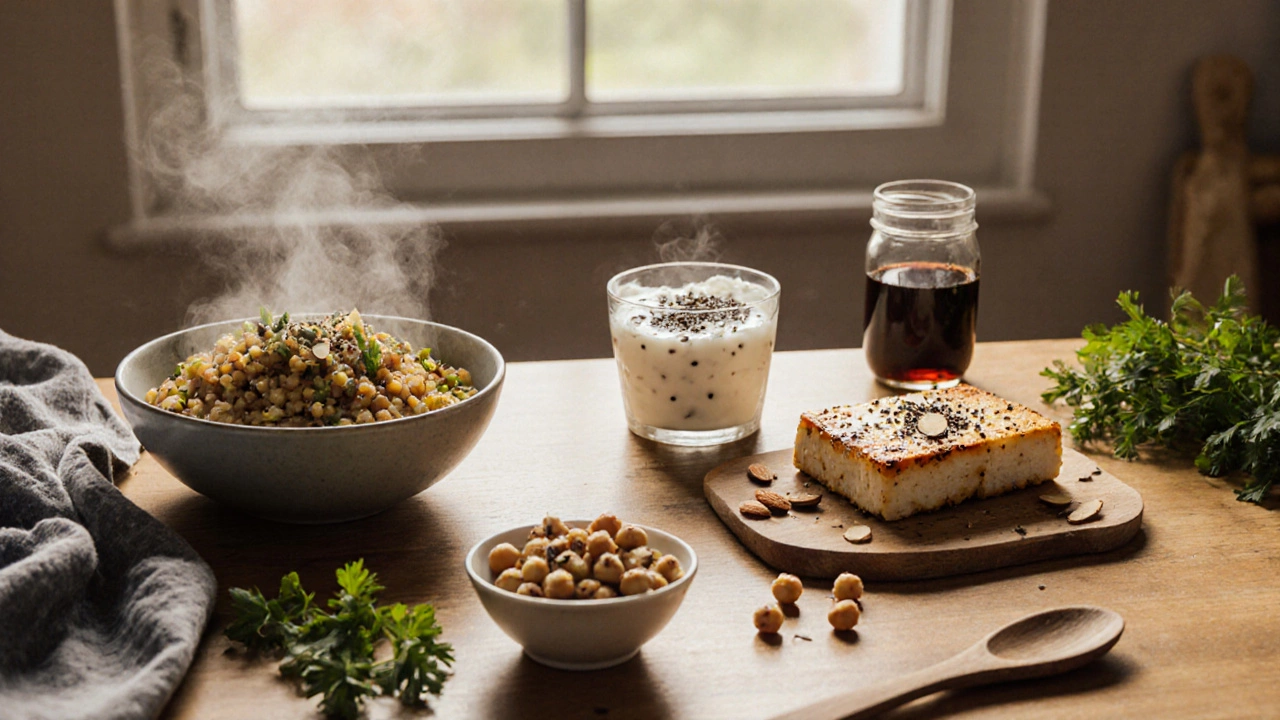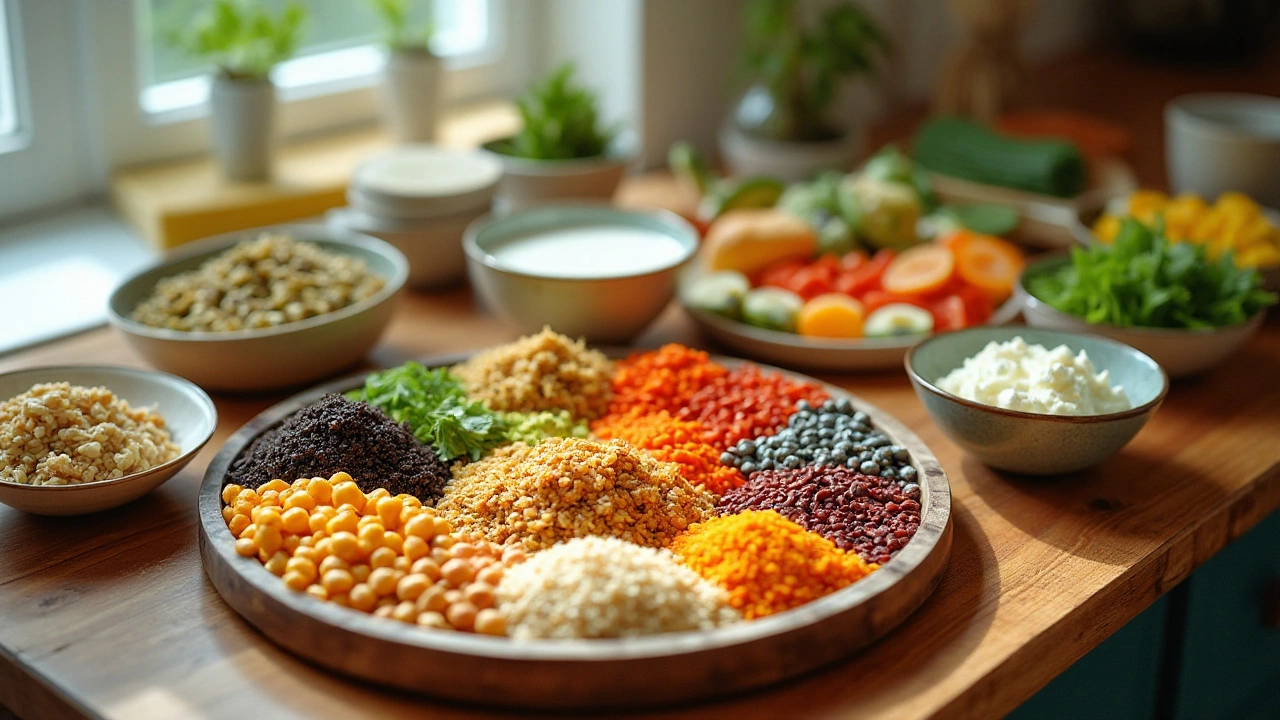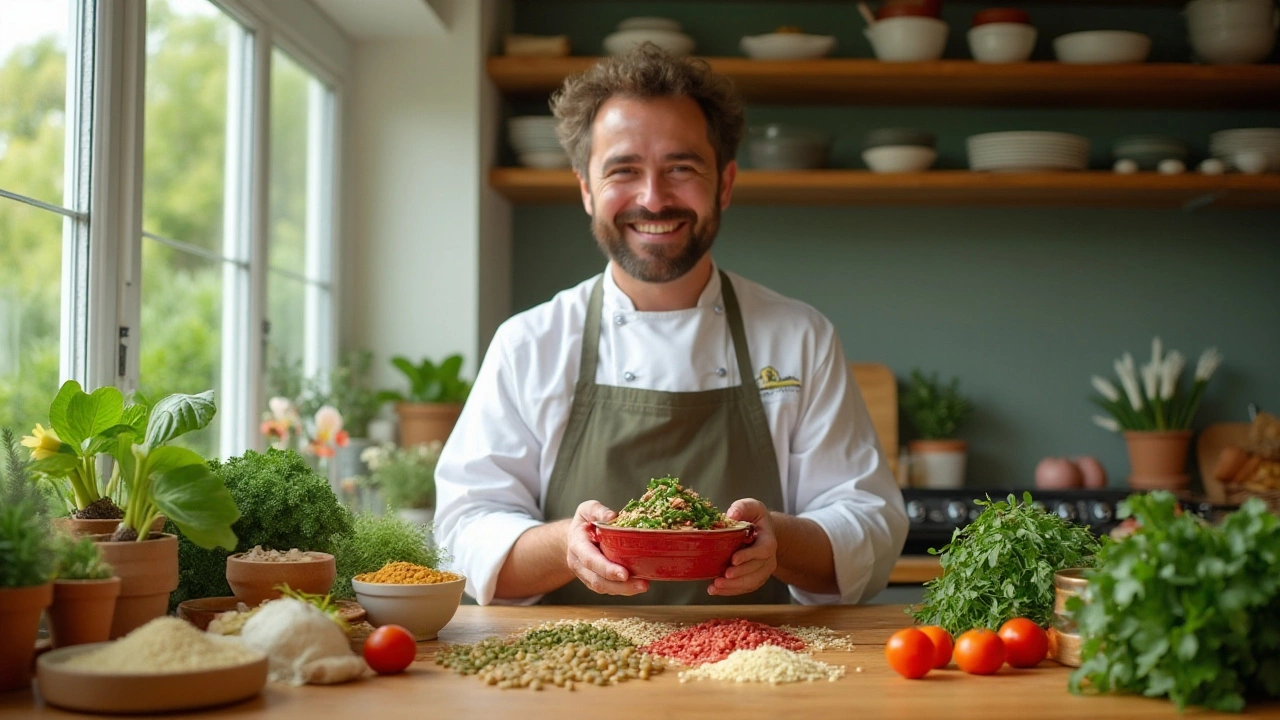Vegetarian Protein: Simple Ways to Boost Plant‑Based Power
If you think going meat‑free means you’ll miss out on protein, you’re wrong. Plant foods can deliver every amino acid you need, and they often bring extra fiber, vitamins, and minerals. The trick is to mix the right sources and plan a few easy meals each week. Below you’ll find the most reliable protein powerhouses, quick recipe ideas, and tips to keep your diet balanced without counting every gram.
Top Plant‑Based Protein Sources
Legumes are the headline act. A cup of cooked lentils or chickpeas gives you about 18 g of protein, plus iron and folate. Beans—black, kidney, or pinto—work the same way and are great in salads, soups, or wraps. If you’re looking for something less “beany,” try soy products. Firm tofu provides 20 g per cup, and tempeh even more, with a nutty flavor that holds up in stir‑fries and sandwiches.
Whole grains aren’t just carbs; they add protein too. Quinoa is a complete protein, delivering 8 g per cooked cup, and it cooks in 15 minutes. Bulgur, farro, and brown rice each add 5‑7 g per cup when paired with beans or nuts. Speaking of nuts, a handful of almonds or a tablespoon of peanut butter adds 6‑8 g of protein plus healthy fats that keep you full longer.
Quick Meal Ideas to Keep Protein Up
Start your day with a protein‑packed smoothie: blend silken tofu, frozen berries, a scoop of plant protein powder, and oat milk. It’s creamy, satisfying, and ready in under a minute. For lunch, make a “protein bowl” by layering quinoa, roasted chickpeas, sautéed kale, and a drizzle of tahini. The mix of textures makes the meal interesting while delivering 25 g of protein or more.
Dinner can be as simple as a one‑pan stir‑fry. Toss cubed tempeh, broccoli, bell peppers, and a splash of soy sauce into a hot skillet. Serve over brown rice or whole‑wheat noodles, and you’ve got a balanced plate in 20 minutes. If you need a snack, keep roasted edamame or a Greek‑style soy yogurt on hand – both give you a quick protein boost without the crash.
When you’re planning weekly meals, aim for a “protein pair” at each main dish: legumes + grains, tofu + nuts, or tempeh + whole‑grain pasta. This combo ensures you hit a full amino‑acid profile without having to track numbers obsessively. And don’t forget the occasional protein‑rich whole‑food supplement like hemp seeds or spirulina for extra variety.
By mixing these sources, you’ll get enough protein to support muscle repair, immune health, and everyday energy. The key is variety and a little forward planning. Grab a few of the items listed above, experiment with the quick recipes, and you’ll see how easy it is to stay strong on a vegetarian diet.

What Do Vegetarians Eat for Protein? Real Foods That Work
Vegetarians get plenty of protein from beans, lentils, tofu, eggs, dairy, nuts, and whole grains. No supplements needed. Real foods work better than pills.
More Detail
Achieving 100g Protein Daily as a Vegetarian: Tips and Tricks
Discover how to reach a daily intake of 100 grams of protein while following a vegetarian diet. Explore a variety of protein-rich foods and meal ideas that make it easier to meet your nutritional goals. From legumes and grains to dairy and plant-based products, learn how to build balanced meals that cater to vegetarians. Gain insights into combining different food sources for a complete protein profile. This guide is ideal for those looking to maintain their vegetarian lifestyle without compromising on their protein needs.
More Detail
Top 6 Vegetarian Protein Sources You Need to Try
Finding nutritious vegetarian food sources that provide adequate protein can be delightful and rewarding. This article explores six fantastic options for those seeking high-protein vegetarian choices. It includes tips and insights about each source and practical advice on how to incorporate them into your daily diet. Whether you're a seasoned vegetarian or just exploring plant-based options, these protein sources can enrich your meals with their benefits.
More Detail